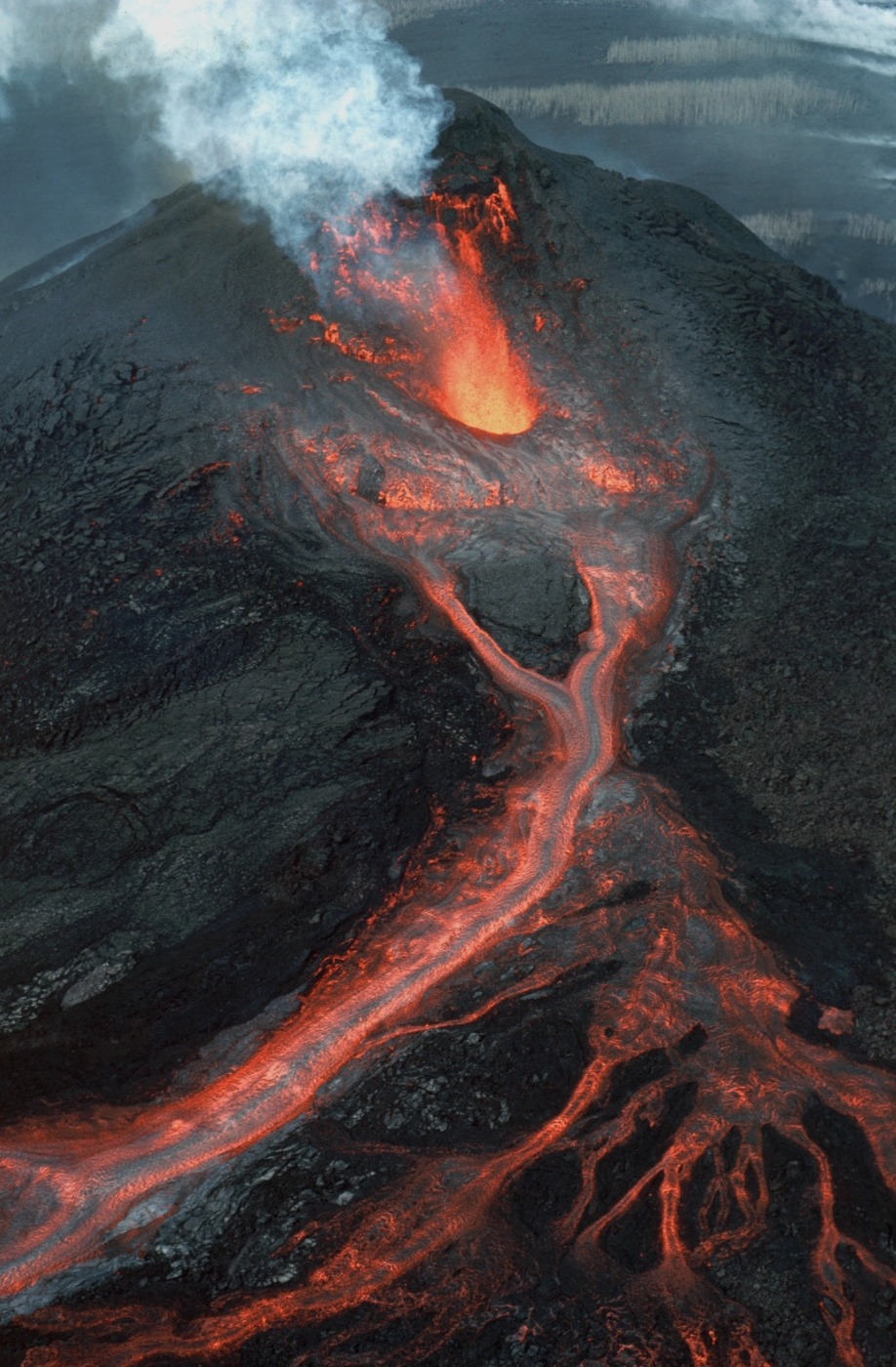What would a metal volcano look like?
Volcanism has been back in the news recently with stories of an eruption in Iceland. But as we see those images of lava pouring out near Reykjavik, a classic example of volcanic activity throughout Earth’s history, it may come as a surprise that not every volcano in the universe conforms to our earthbound concept of how they work. A pilot study from North Carolina State University has offered insights into ferrovolcanism, or volcanoes made primarily out of metal instead of rock. This work may help scientists interpret features on other worlds, explaining how metallic exoplanets and asteroids became the way they are today.
To begin, let’s recap how Earth-based volcanoes work. Volcanoes erupt when molten rock called magma reaches the surface – as it’s lighter than rock it rises, forming bubbles of gas as it does. Runny magma erupts through openings or vents in the Earth’s crust before flowing out onto the surface as lava. If the magma is thick, gas bubbles cannot easily escape – as the pressure builds, an explosive eruption may occur.
This description relies on rock, but not every planetary body is made of rock – some can be primarily icy or metallic. According to Arianna Soldati, Assistant Professor of Marine, Earth, and Atmospheric Sciences at NC State and lead author of the paper, “cryovolcanism is volcanic activity on icy worlds, and we’ve seen it happen on Saturn’s moon Enceladus. But ferrovolcanism, volcanic activity on metallic worlds, hasn’t been observed yet.”
Not every planetary body is made of rock – some can be primarily icy or metallic
The inspiration for this study on ferrovolcanism came from 16 Psyche, a 140-mile diameter asteroid situated in the asteroid belt between Mars and Jupiter. It’s the subject of an upcoming NASA mission, and its surface (mainly iron and nickel, according to infrared and radar observations) inspired Soldati to explore what volcanic activity may look like on a metallic world. She said, “when we look at images of worlds unlike ours, we still use what happens on Earth – like evidence of volcanic eruptions – to interpret them. However, we don’t have widespread metallic volcanism on Earth, so we must imagine what those volcanic processes might look like on other worlds so that we can interpret images correctly.”
In her research, Soldati defines two possible types of ferrovolcanism: Type 1, or pure ferrovolcanism, which occurs on entirely metallic bodies; and Type 2, spurious ferrovolcanism, which occurs on hybrid rock-metallic bodies. In the study, Soldati and colleagues from the Syracuse Lava Project worked to produce Type 2 ferrovolcanism, in which metal separates from rock as the magma forms. They found that metal magma flowed ten times faster and dispersed in shallower channels than rock, which prevents any towering mountains from forming (you can watch as the metal and rock separates here).
These experiments should not be understood as definitive – rather, they’re the best approximation of a metal volcano that scientists could model today. The dynamics of a distant world will likely be far more complex than lab conditions, but this pilot study gives scientists a reasonable frame of reference as they look for ferrovolcanism around the universe. Soldati notes, “although this is a pilot project, there are still some things we can say. If there were volcanoes on 16 Psyche – or on another metallic body – they definitely wouldn’t look like the steep-sided Mt. Fuji, an iconic terrestrial volcano. Instead, they would probably have gentle slopes and broad cones. That’s how an iron volcano would be built – thin flows that expand over longer distances.”

Comments